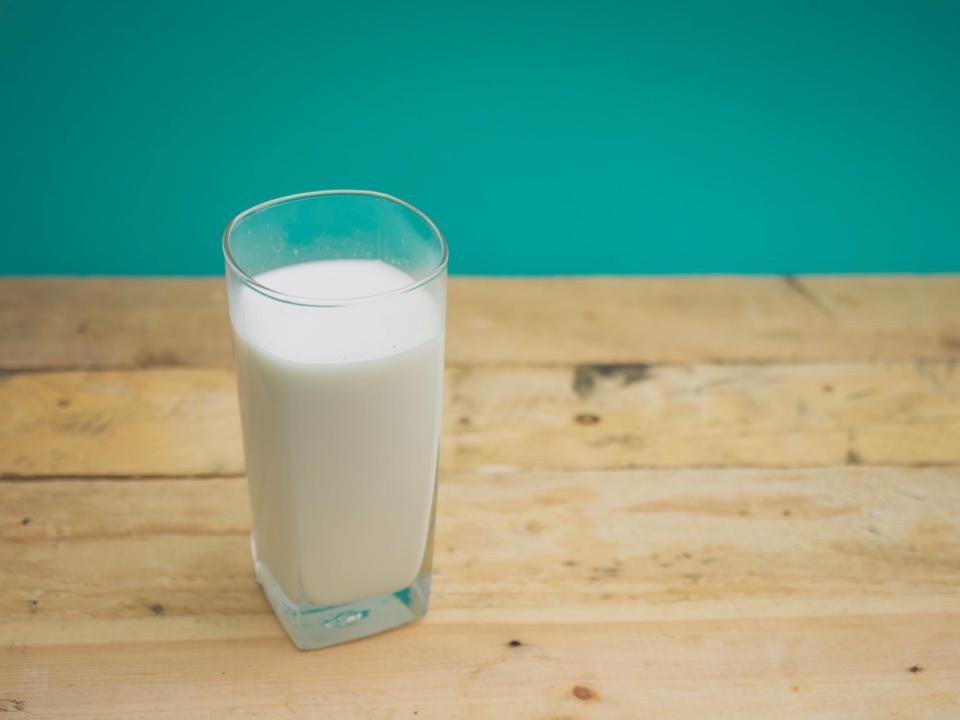Full-Fat Dairy Is Healthier for You Than You Think
Contrary to what you might think, fat is not to be feared. In fact, it can even be your friend, as evidenced by the current obsession with avocados and the rise in popularity of the keto diet. And this holds true when it comes to dairy too. A recent study published in the American Journal of Clinical Nutrition found that full-fat dairy, long believed to contribute to heart issues due to its higher saturated-fat content, can help lower your risk of cardiovascular disease, particularly stroke.

Still need a little convincing that full-fat dairy is actually healthy? Melissa Majumdar, MS, RD, senior bariatric dietician at Brigham and Women’s Hospital in Boston and spokesperson for the Academy of Nutrition and Dietetics, advises women to “not be afraid of full-fat dairy.” And she breaks down the differences between all the various options so you’ll be able to make an informed decision the next time you’re in the dairy aisle at the grocery store.
For an eight-ounce serving, she tells us that whole milk, low-fat milk (one and two percent), and fat-free (skim) milk have the same amount of protein (eight grams) and natural sugars (12 grams), but different amounts of calories and fat. The calories range from about 80 in an eight-ounce glass of skim milk to 150 for whole milk. “Whole milk contains 3.5 to four percent fat, and has around eight grams of fat. Low-fat milk is usually one to two percent fat, and contains around two grams of fat. And fat-free milk has zero percent fat,” Majumdar explains.
And full-fat dairy has lots of added benefits compared to low- and non-fat options. Obviously, with added fat comes added calories… but it’s actually sugar that you need to be wary of.
“A lot of times when including dairy in our diets, it’s hard to avoid added sugars. Sugar and fat both improve the flavor of foods, and oftentimes when one is removed, as is the case with fat-free yogurt, salad dressing, or even peanut butter, more sugar is added in,” Majumdar says. “I am a proponent for a little bit of fat to help with mouthfeel, and [getting] sweetness from a natural source, like fresh fruit. I personally choose two percent yogurt or one percent cottage cheese. If a little more dairy-based fat helps reduce added sugars, it can be a good choice.”
Since you need fat in your diet anyway, you might as well get it from a comparatively healthy source like full-fat dairy, versus reaching for that cheeseburger piled high with every greasy topping imaginable. “The 2015-2020 Dietary Guidelines for Americans recommend keeping calories from saturated fat under 10 percent of total calories. We can choose those calories to be from full-fat dairy and reap a lot of benefits,” says Majumdar. “Dairy, in general, is a good source of protein, calcium, vitamin D, magnesium, phosphorus, and potassium. These nutrients don’t change with skim versus full-fat dairy, and compared to other foods that are high in saturated fats like snack foods or marbled meats, we gain a lot of nutritional benefits.”
Another benefit of choosing full-fat dairy is that can help your body absorb more nutrients. “Having fat alongside fat-soluble vitamins such as A, D, E, and K helps us absorb them. In other words, dairy is nutrient-dense and a great way to spend our saturated-fat calories, and having a little fat with the dairy helps us reap more of the benefits,” she says.
It also has more flavor than low- or non-fat alternatives, which can help stave off cravings and help prevent over-consuming to make up for lack of taste. “Full-fat dairy may be more satisfying and help curb extra calories from larger portions or added sugars,” Majumdar points out. “If full-fat dairy helps people eat more dairy and less added sugar, and can be chosen within overall calorie and saturated fat guidelines, then full-fat is a good choice.”
What’s your favorite dairy option? Let us know @BritandCo!
(Photo via Getty)


